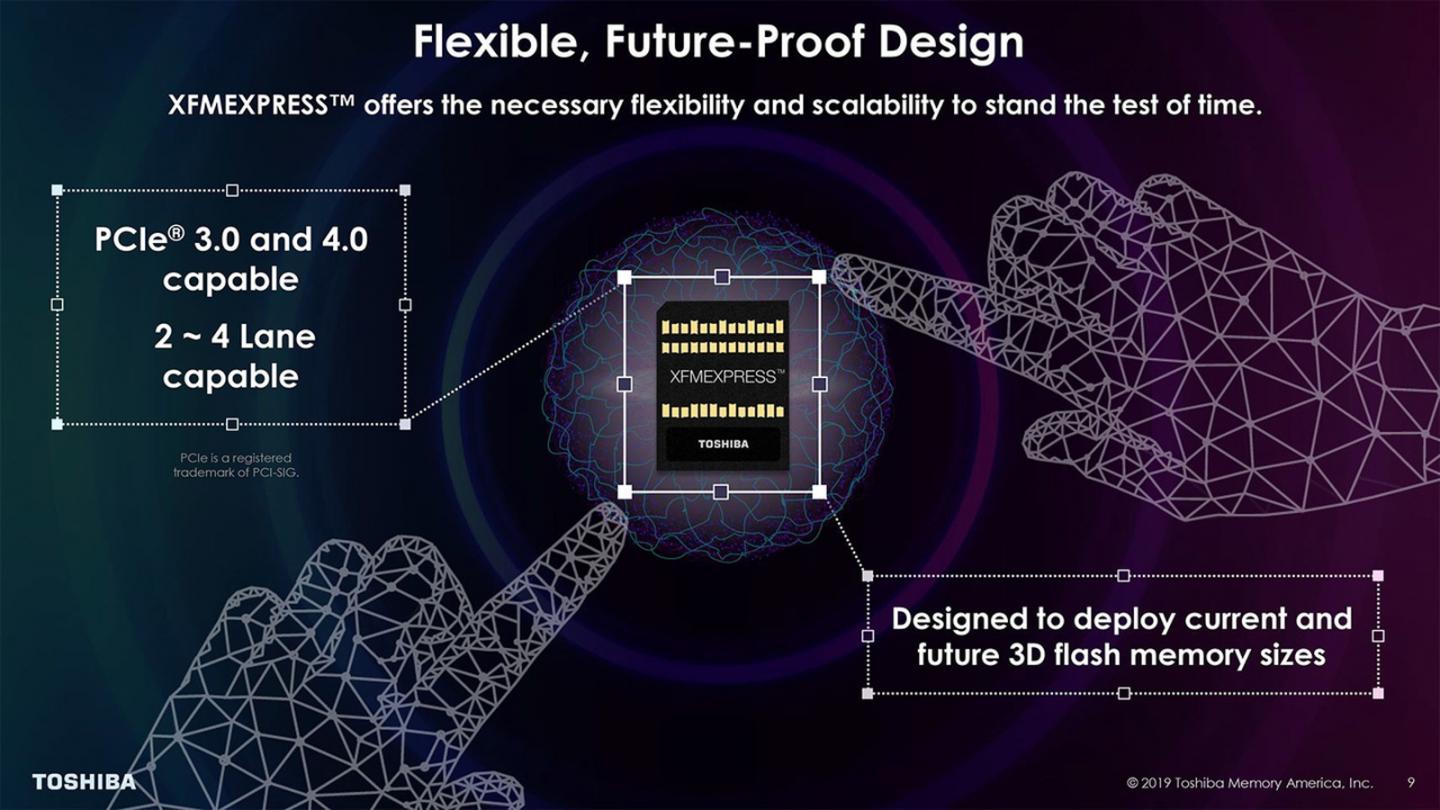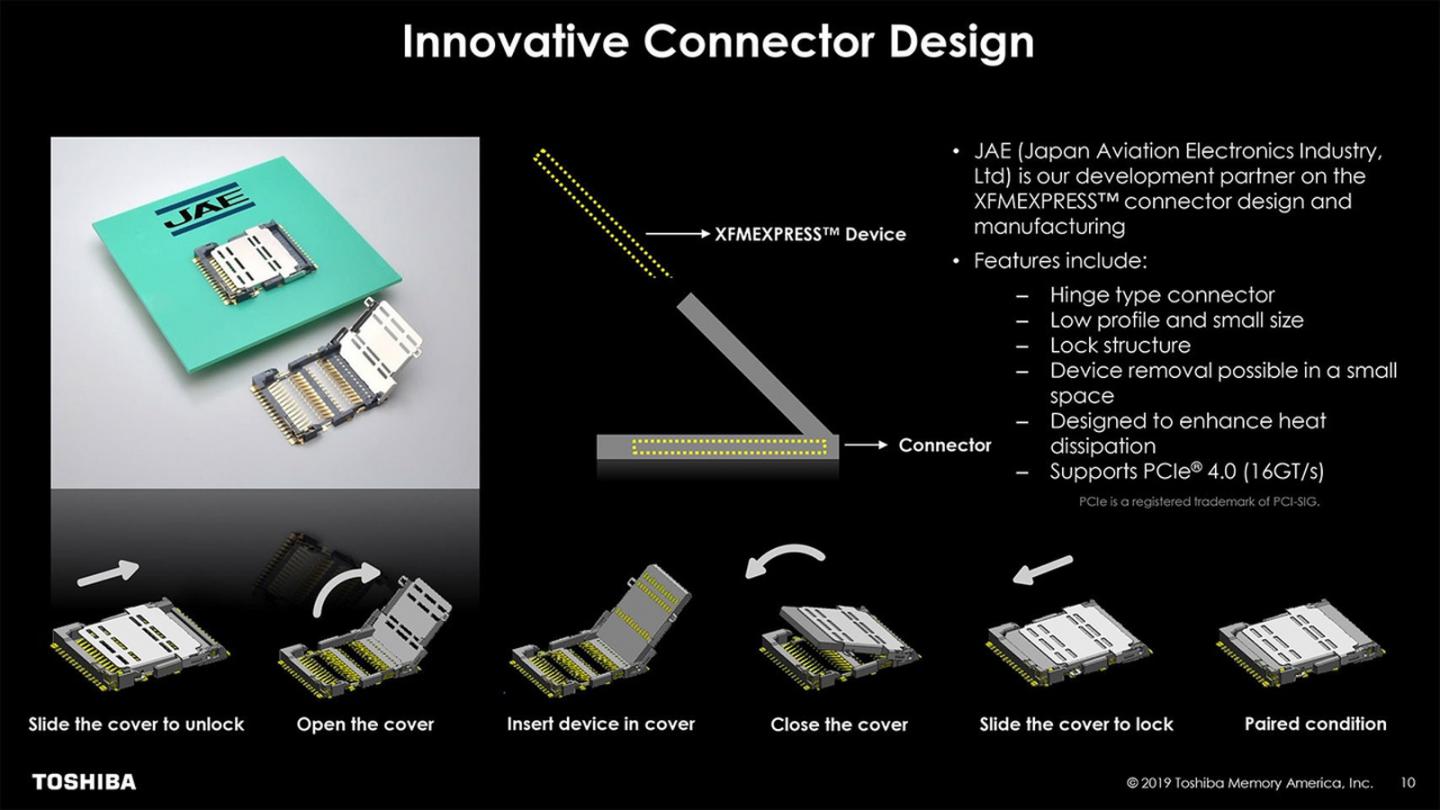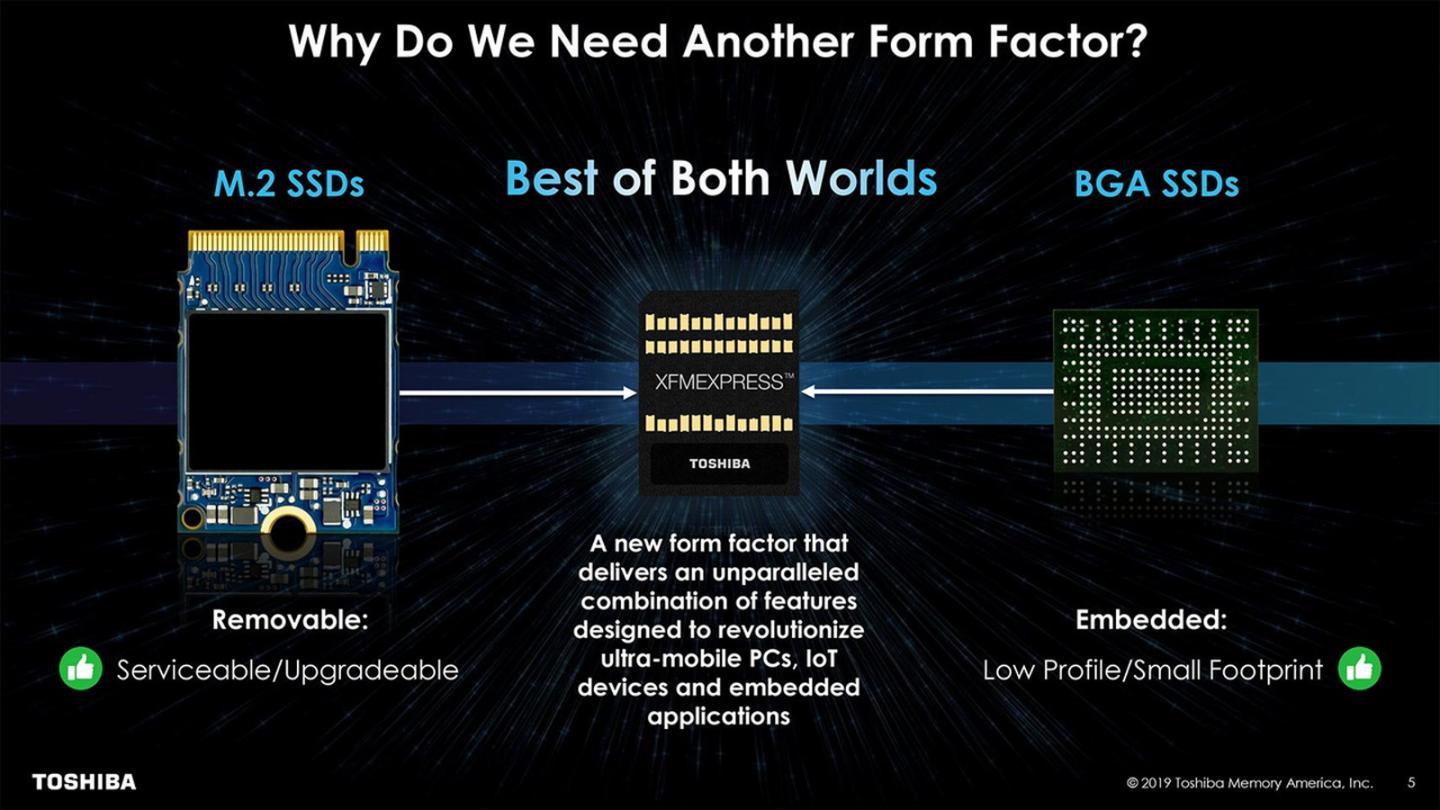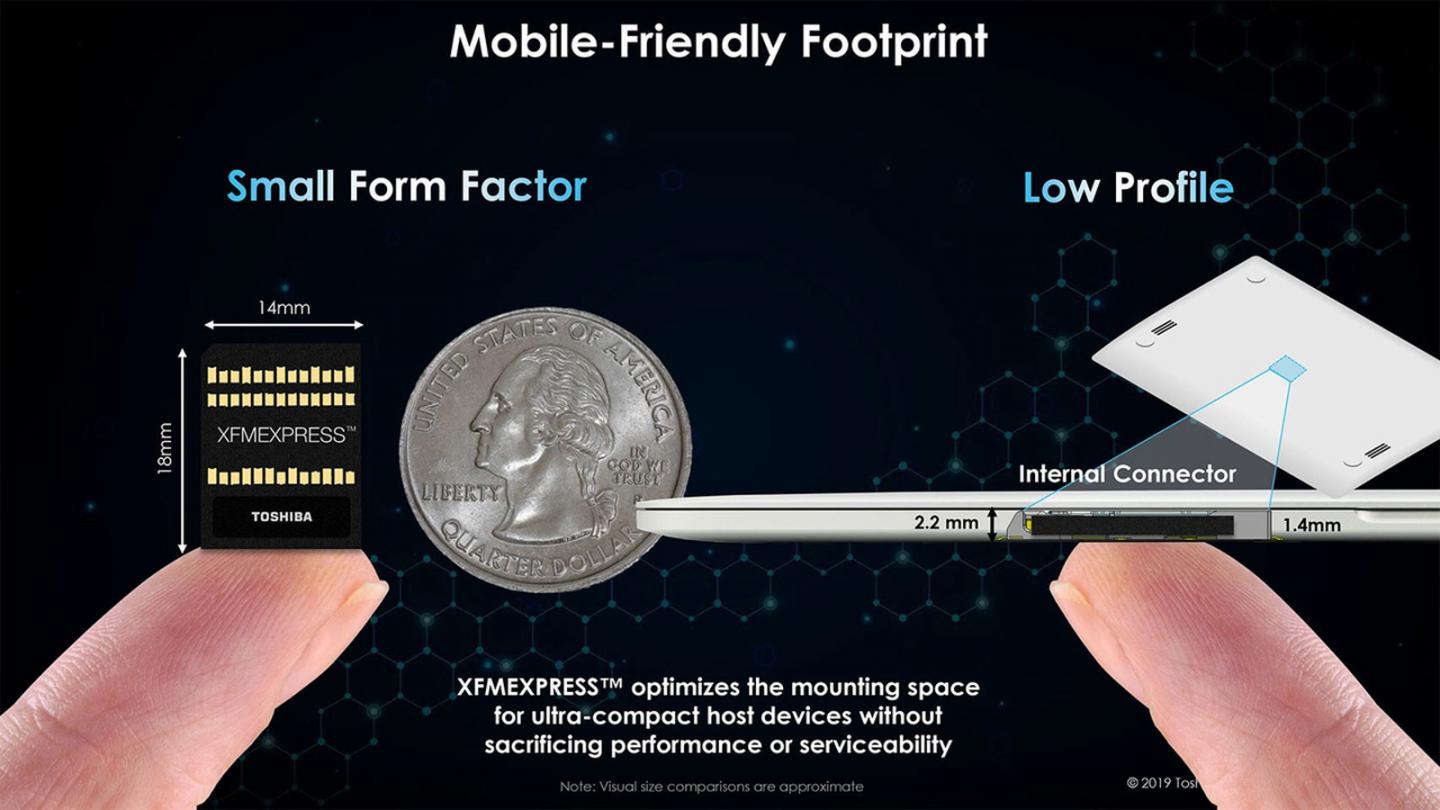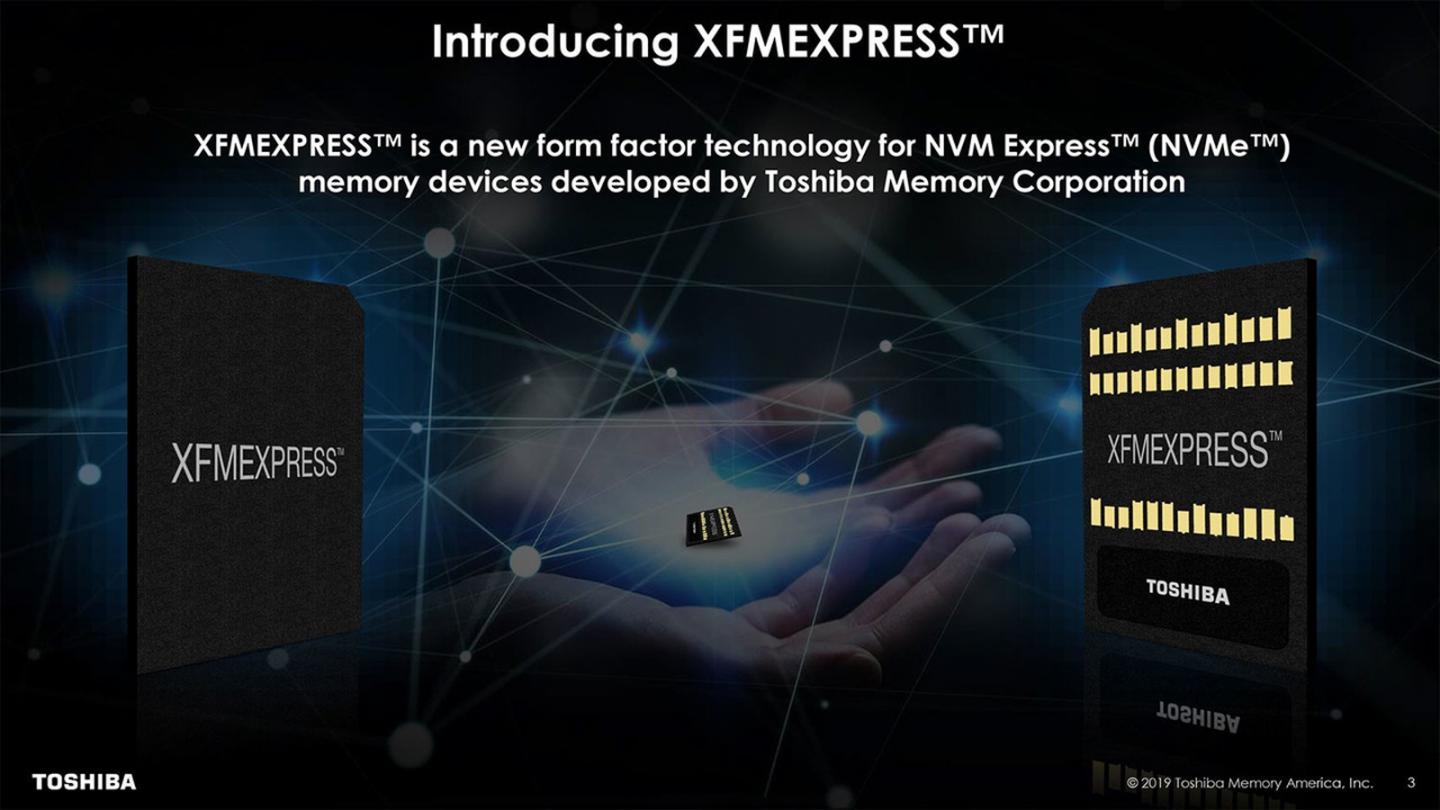Toshiba has introduced a new technology for removable PCIe attached, NVMe memory devices: XFMEXPRESS. The memory cards have dimensions of 18x14x1.4 mm. This means that the nvme-ssds are approximately half the size of micro-sd memory cards.
Xfmexpress SSDs can offer the same performance as soldered BGA variants. The form factor works with the pci-e interface with two or four lanes. There is support for pci-e 3.0 and 4.0.
The XFMEXPRESS form factor’s no-compromise size and low profile (14mm x 18mm x 1.4mm) offers a 252mm2 footprint1, optimizing the mounting space for ultra-compact host devices without sacrificing performance or serviceability. With this minimized z-height, the XFMEXPRESS form factor is excellent for thin and light notebooks and creates new design possibilities for next-generation applications and systems.
Leading-Edge Performance
Designed for speed, XFMEXPRESS technology implements a PCIe 3.0, NVMe 1.3 interface with 4 lanes (4L), supporting theoretical bandwidth up to 4 gigabytes per second (GB/s) in each direction, and up to 8GB/s in each direction for next-generation use cases2. XFMEXPRESS technology’s industry-leading performance capabilities and durable form factor provide a compelling alternative to the status quo, enabling superior computing and entertainment experiences.
Flexible, Future-Proof Design
XFMEXPRESS technology offers the necessary flexibility and scalability to stand the test of time. It is both PCIe 3.0 and 4.0 capable, can be configured with 2L to 4L, and is designed to deploy current and future 3D flash memory sizes, ensuring products using the XFMEXPRESS form factor can scale with the market.
Innovative Connector
The unique design of XFMEXPRESS technology offers optimized functionality and robustness, as well as a purpose-built connector that improves ease-of-use and thermal efficiency.
“Innovation like this is only made possible by redefining storage technology itself,” said Jeremy Werner, senior vice president and general manager, SSD Business Unit, Toshiba Memory America, Inc. “From the PCB design to the connector, no other solution comes close to the combined size, speed, and serviceability of XFMEXPRESS technology. Toshiba Memory is excited to introduce this revolutionary new form factor to the market and enhance next-generation applications.”
“We believe that XFMEXPRESS technology is a great solution that will open new doors for innovative devices and applications in the information technology industry,” said Hajime Saito, associate senior vice president, Japan Aviation Electronics Industry, Ltd. (JAE). “JAE is preparing the industry's first connector compatible with this memory device to support global hardware manufacturers who are interested in our new technology.”
“We wish to congratulate Toshiba Memory on their announcement of XFMEXPRESS technology,” said Luis Hernandez, vice president, Commercial Product Solutions Development, Lenovo. “It is an amazing technology that will help us develop thinner, smaller and lighter form factors in the future. We fully support and appreciate Toshiba Memory’s intention to make XFMEXPRESS technology widely available and help drive the PC industry forward.”


